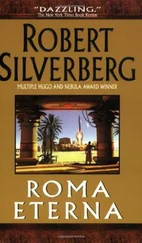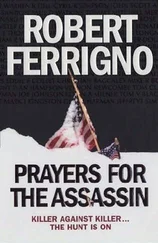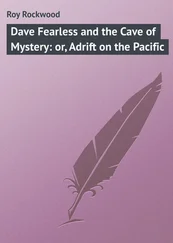They did. But Lieutenant Colonel Al Pollock, Rivers’s battalion commander, was helpless, on the day of departure, to do more than give the men a tongue-lashing and put them on restriction. This was merely a disciplinary tautology, because as Rivers’s buddy, Private Al Schmid, a short, stocky brashness with an irrepressible blond cowlick, explained the situation: “We were on restriction already!”
“Yah-vo!” said Johnny, and that afternoon he and Smitty and the rest of the First Marines went aboard their train. 10
They were astonished. Here was no grimy, crowded troop train but a line of Pullman cars with a separate berth for each man, with porters and a luxurious dining car in which waiters in white jackets served their individual tastes on clean plates and starched linen. Very few twenty-one-dollar-a-month privates have gone so opulently to war.
Five days later—having traversed that vast and gloriously varied country which most of them had never seen before—having been charmed by gophers gaping at them from prairie holes, having marveled at the primitive pure beauty of the Ozarks or the myriad million fireflies that seemed to set the Kansas wheatfields blazing, having missed the Mississippi by a night crossing but having caught their breath at the grandeur of the Rockies, they climbed the Sierra Nevadas like a long slow roller-coaster and went racing down the reverse grades to San Francisco and the sea.
As they disembarked from the trains to board waiting ships, newsboys went among them hawking newspapers with great black headlines announcing that a vast air-sea battle was being fought at a place called Midway Island.
The Japanese struck first.
Confident that no American carriers could possibly reach the Midway area for two more days, Admiral Chuichi Nagumo launched his opening strike at Midway Island itself while flying off a merely routine search for enemy ships.
On June 4, just before sunrise, 108 fighters, dive-bombers and torpedo-bombers roared aloft from the decks of Admiral Nagumo’s four big carriers. Marine pilots at Midway rose to intercept them. They were slaughtered. Marines flying the near-useless Brewster Buffaloes had no chance against the superior Zero. Only pilots such as Captain Marion Carl flying the new Grumman Wildcats were able to battle the Zero on anything like even terms. In all, fifteen American fighters were shot down. But superb American antiaircraft fire prevented the enemy from damaging Midway’s runways, while downing or damaging dozens of enemy aircraft.
One third of the Japanese attacking force was either shot down or badly damaged, and the formation leader radioed Admiral Nagumo that a second strike against Midway was required. Even as the report was being received, Midway’s land-based bombers came winging over Nagumo’s ships. They were driven off with heavy losses, the Japanese ships were not scratched, but the very appearance of the Americans served to underscore the report that Midway’s airfields were far from being knocked out.
Nagumo ordered ninety-three planes, then armed for possible strikes against enemy ships, to be rearmed with fragmentation and incendiary bombs for use against Midway. As the armorers rushed to comply, a search plane reported ten American ships to the northeast.
Chuichi Nagumo was thunderstruck. No American ships were supposed to be within a thousand miles of Midway! Shaken, pacing Akagi ’s bridge with his white-gloved hands locked behind his back, Nagumo took a full quarter-hour to decide to order the ninety-three planes changed back to ship-bombs. By then, it was too late—the formations which had attacked Midway were returning and all flight decks had to be cleared to receive them. Still sailing toward Midway in box formation, the four big carriers —Akagi, Hiryu, Soryu , and Kaga— began taking planes aboard.
An hour later all decks were cleared. Nagumo ordered the second strike launched against the American task force.
And in so doing he did exactly what the Americans expected him to do.
Captain Miles Browning, Bull Halsey’s chief of staff on loan to Admiral Spruance, had calculated that Nagumo would keep steaming toward Midway and would launch a second strike at the island. He decided that the time to hit the Japanese would be while they were refueling planes on deck.
At seven that morning, 175 miles from the enemy’s calculated position, Spruance ordered Enterprise and Hornet to launch planes. Twenty Wildcats, sixty-seven Dauntless dive-bombers, and twenty-nine Devastator dive-bombers—116 planes in all—went hurtling aloft. Admiral Fletcher delayed Yorktown’ s launching on the chance that other targets might be discovered. Even so, by nine o’clock, just as the last of the warbirds from Enterprise and Hornet were airborne, Yorktown had thirty-five planes—six Wildcats, seventeen Dauntlesses, and twelve Devastators—in the skies.
Most of them caught Nagumo. They found his four big carriers as expected, rearming and refueling.
Hornet’ s torpedo-bombers—her fighters and dive-bombers missed the enemy entirely—attacked first. They were annihilated. Of fifteen Devastators that struck, every one was shot down and only one pilot survived. Enterprise’ s torpedo squadron skimmed in next, and was also slaughtered: ten out of fourteen destroyed. Then came Yorktown’ s dozen Devastators, and only four survived.
Not a single Japanese ship was touched.
In about a hundred glittering seconds it seemed to Chuichi Nagumo that the war was won.
And then the matchless American dive-bombers also found the Japanese.
There were thirty-seven Dauntlesses from Enterprise under Lieutenant Commander Clarence McCluskey. McCluskey took half of them down on Kaga , while Lieutenant Earl Gallaher led the rest against Akagi .
They sank them both.
Next, seventeen Dauntlesses from Yorktown under Lieutenant Commander Max Leslie fell upon Soryu and left her a crippled wreck to be broken in two by the torpedoes of U.S. submarine Nautilus .
In six minutes, Nagumo had lost his own flagship—having to transfer to the cruiser Nagara— and two other carriers. But he retaliated by ending the career of Yorktown . And while the bold Japanese Kates were breaking through Yorktown’ s antiaircraft screen to put three torpedoes into the great ship’s hull, twenty-four Dauntlesses led by the formidable Gallaher found Hiryu , fell upon her, and put her on the bottom.
Well to the rear with Yamato and the Main Body, Isoroku Yamamoto read reports of the battle in stunned silence. His entire fast carrier group—four big flattops—had been lost, against only one American carrier sunk. With them went their complement of 250 planes, and 2200 officers and men. Although the smaller northern force had seized bases in the Aleutians, it had failed in its chief mission: to lure the Americans away from Midway.
Yamamoto recognized disaster when he saw it, and he ordered a general retirement. For the first time in 350 years Japan had suffered a naval defeat. At one blow—in a single day’s fighting—the advantage gained at Pearl Harbor had been lost and parity in carrier power was restored in the Pacific.
All of the Japanese ships reversed course. Isoroku Yamamoto went to his cabin and stayed there for the remainder of the voyage. Tight-lipped and sorrowing, Admiral Tanaka and Commander Hara escorted a bewildered Colonel Ichiki back to Guam.
Never again was the word Midway mentioned in the Japanese Navy.
Ernest King saw his chance.
The Japanese had been checked at Midway and it was now time for the Americans to seize the offensive. The question was: Where? By the middle of the month King had decided that Tulagi-Guadalcanal in the Solomons was the proper place. He proposed the operation to the Joint Chiefs of Staff.
Читать дальше












